“There is an eternal landscape, a geography of the soul; we search for its outlines all our life” – Josephine Hart
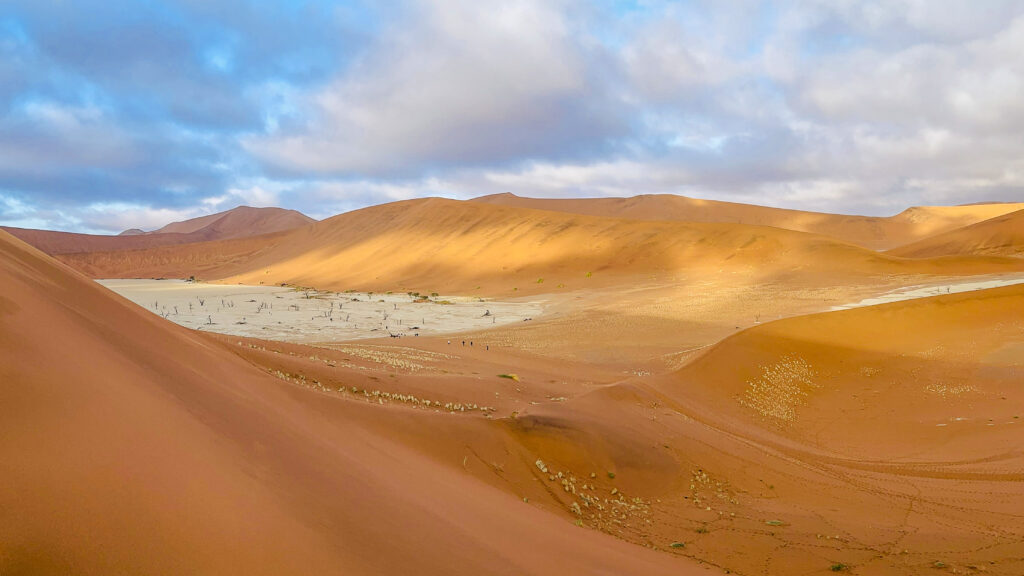
Namibia attracts and eludes. This wild land has a primordial quality and I was captivated by the untouched landscape. It is a country of superlatives; the second least densely populated country of the world is also one of the newest. Home to the largest dunes, darkest skies (night skies), oldest cultures, biggest conservation areas in Africa, the worlds last rhinos and the most complex languages on the Planet.
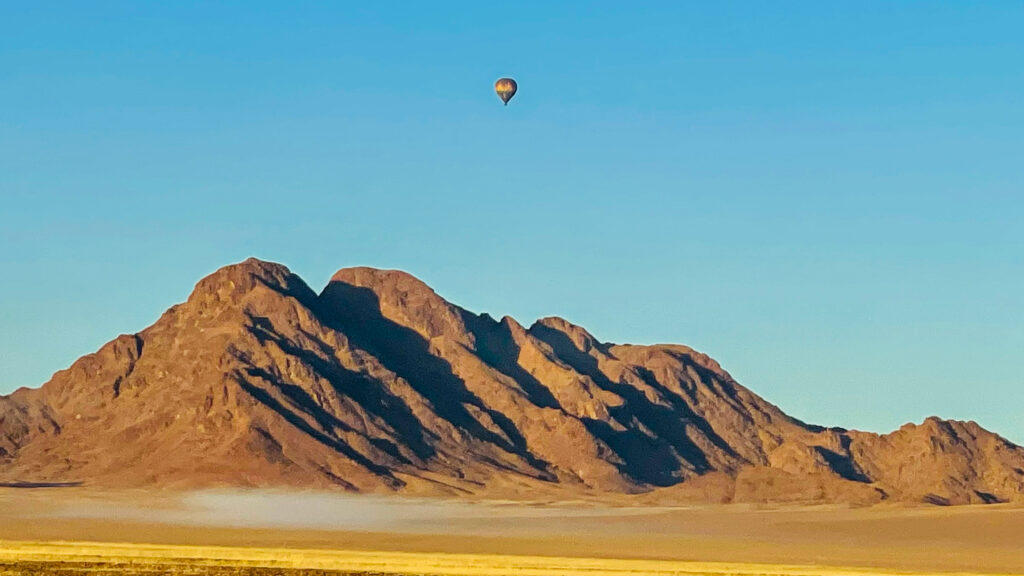
I began my journey in the Wilderness Reserve area of the Namib desert. It had brooding cliffs in varying hues against the drab green to the golden land. The Namib desert stretches to the cool Atlantic coast from where the life giving mists roll inland.
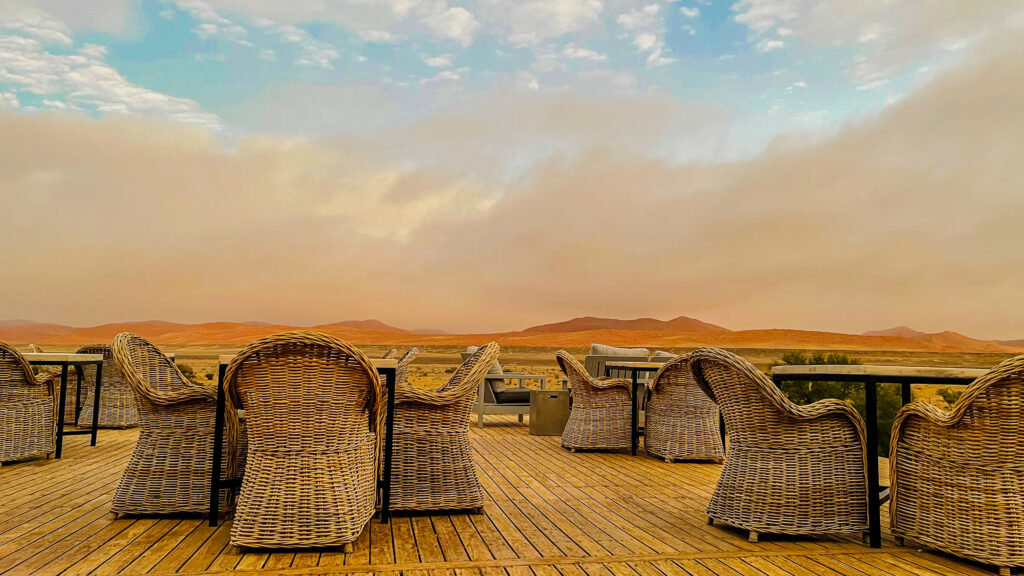
Sossusvlei: ‘Sossus’ in Nama language translates to a dead end or a place of no return, while ‘vlei’ in Afrikaans refers to a shallow lake / marsh. Together, it translates to mean a dead-end marsh. The dunes here are the tallest in the world, in places, rising to more than 300 meters above the desert floor. The sands are red due to a coating of the Iron Oxide. They have originated from the sediments pouring out of the Orange river in the lower Namib desert.
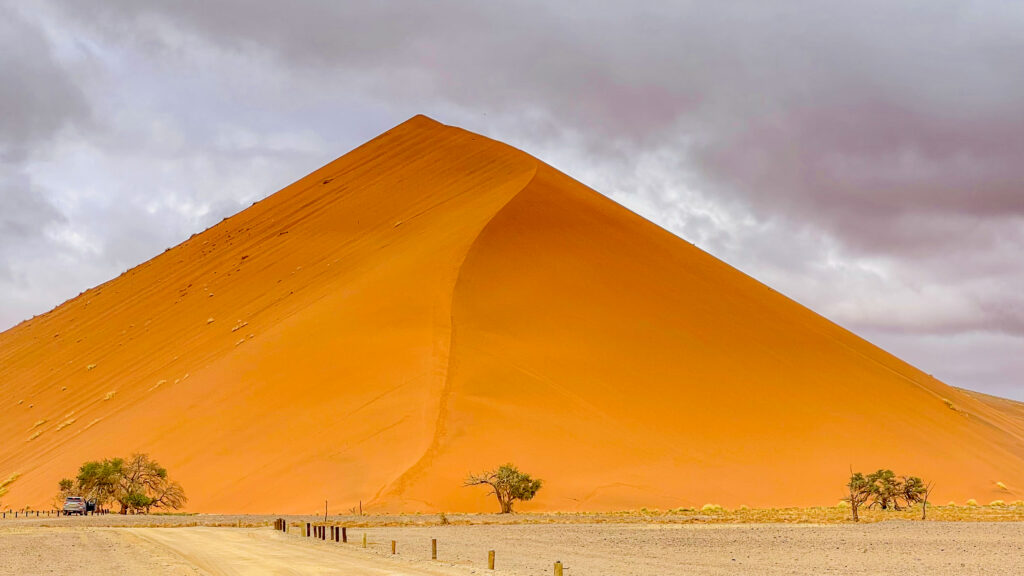
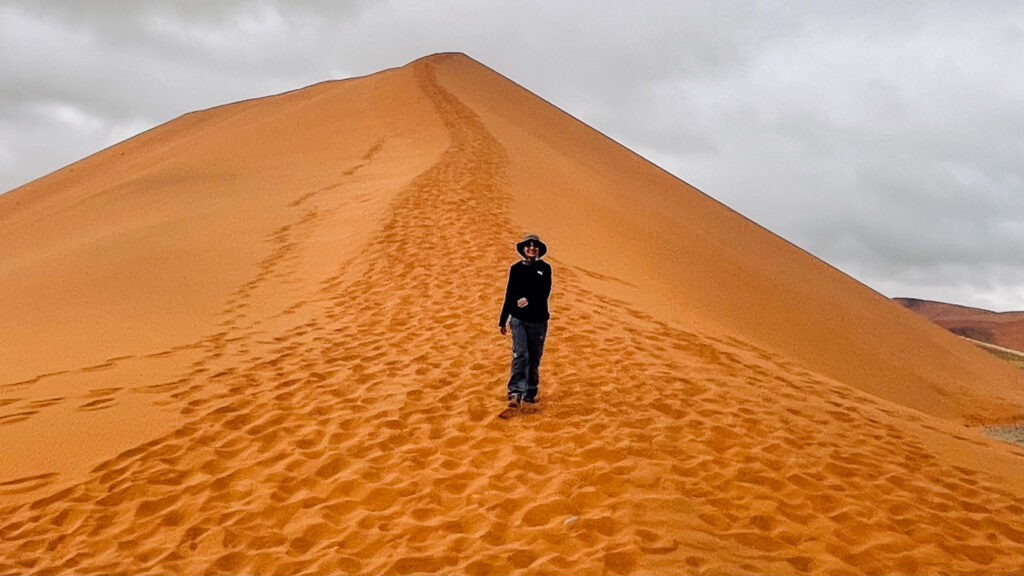
The wind in Sossusvlei blows from all directions causing the sand to form the star shaped dunes with multiple arms. The dunes hardly move due to this unique wind patterns. The sand here is about 5 million years old. The surreal landscape of Deadvlei – a white pan filled with dark fossils of Camelthorn trees in this region is one to behold.

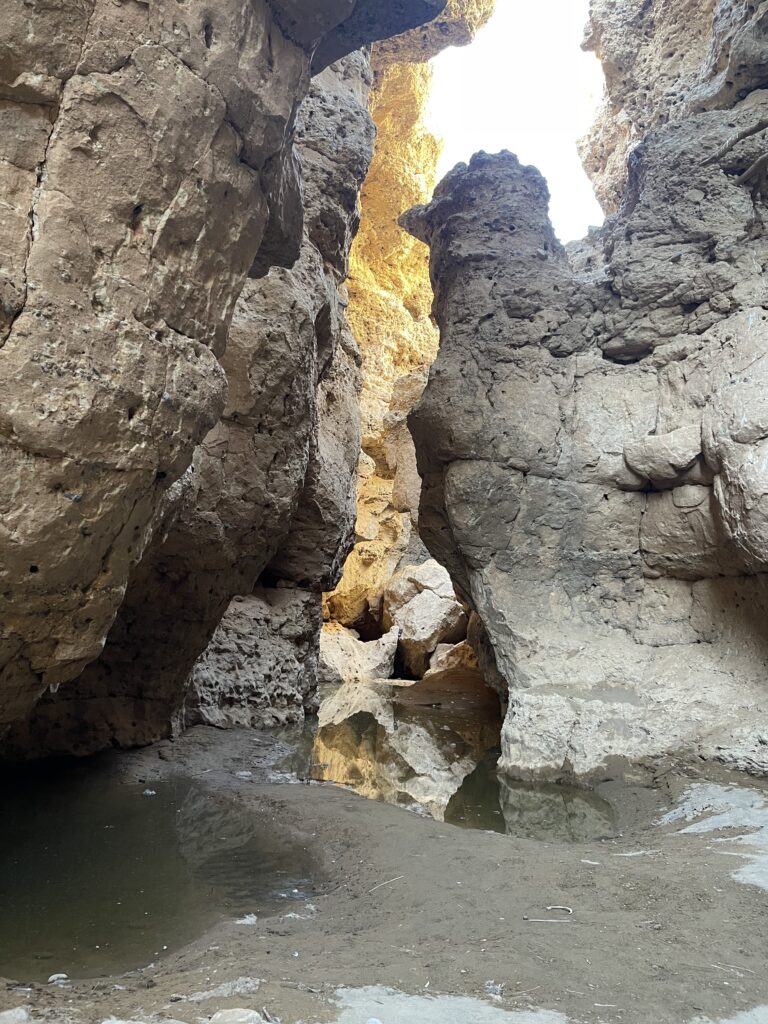
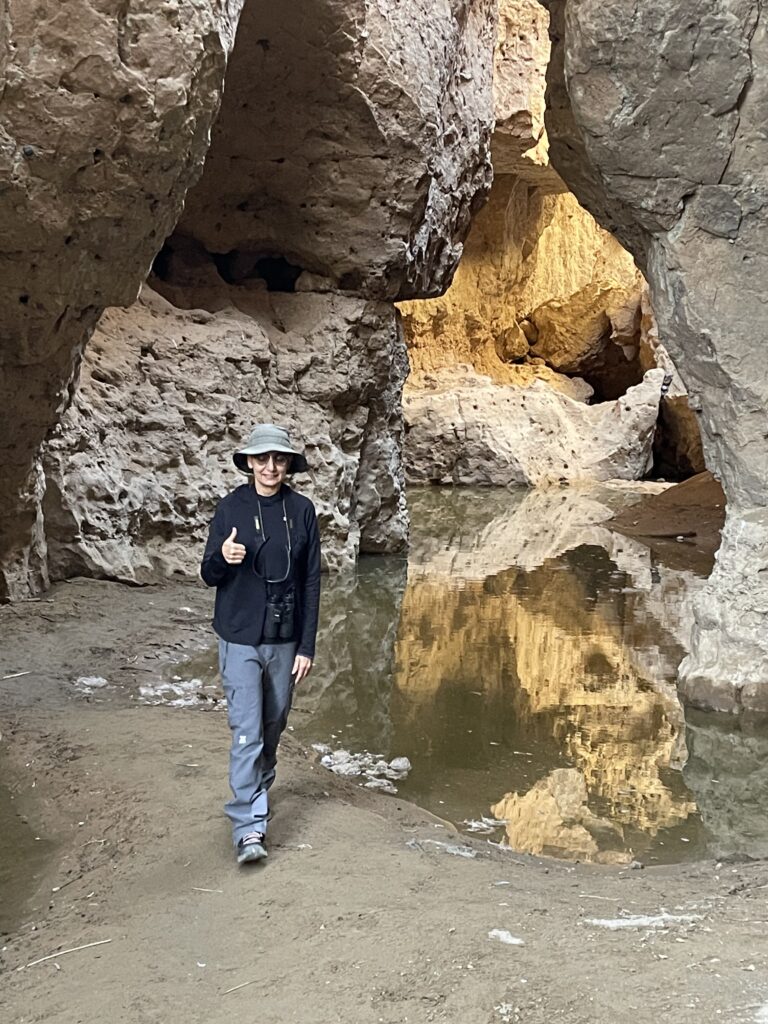
Some unique flora and fauna deserves a special mention.
The Oryx, also known as ‘Gemsbok’ has successfully adapted to harsh conditions where scarce water and intense heat are the norm. It is the national animal of Namibia for its courage, elegance and pride. It appears in the national coat of arms. The most handsome and striking in the antelope species, it is striped like a race car, It has horns like the mythical Unicorn and unlike the harem style of most antelopes, the Oryx form mixed herds of both sexes.
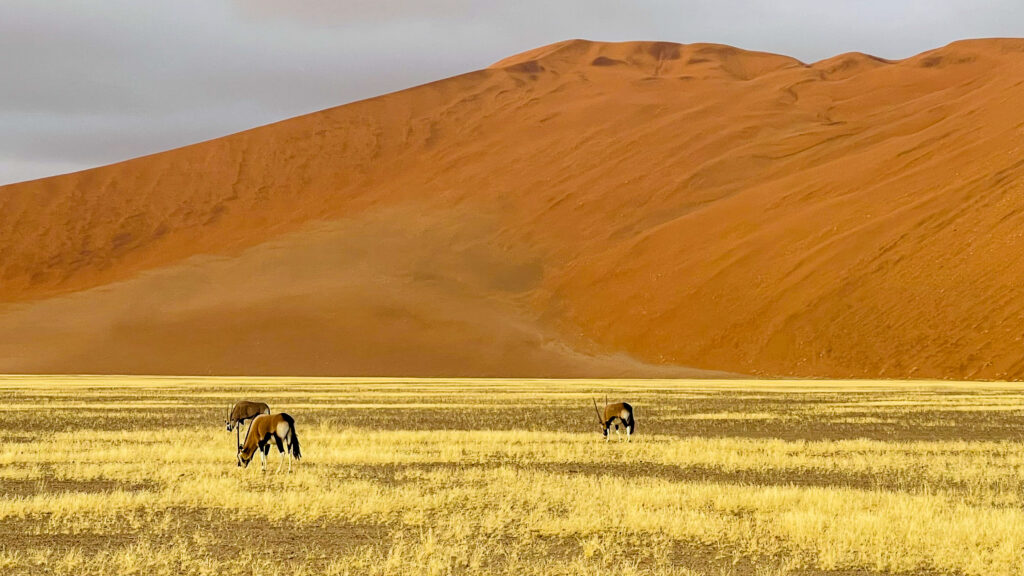
They have evolved to extract water from the fruits and vegetables in the arid area and also to concentrate the urine to decrease the water loss. They have the ability to wander far in times of scarcity, making it the quintessential animal of Namibia.
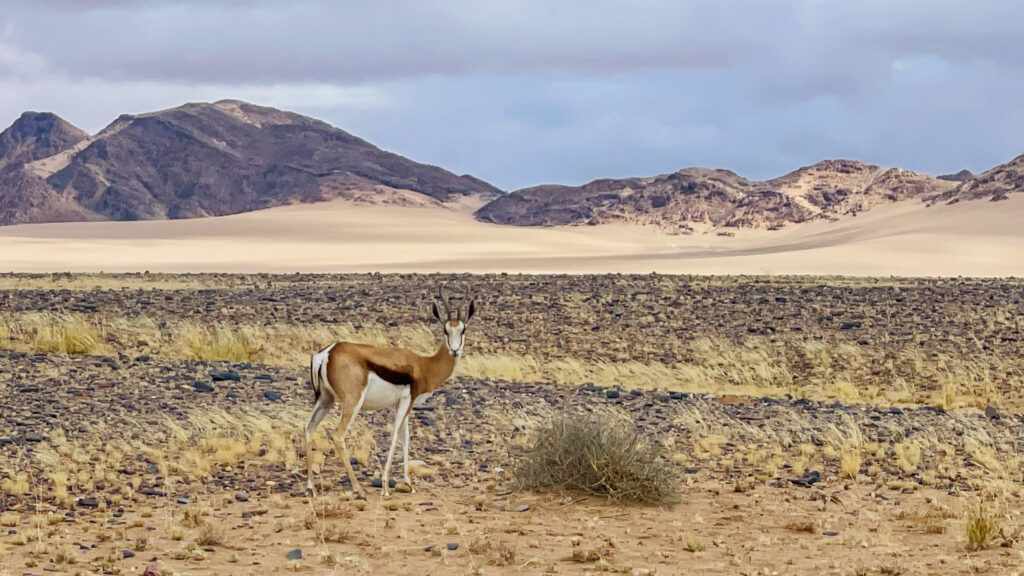
Welwitschia mirabilis (miracle plant) is endemic to the Namib desert and is commonly referred to as the living fossil. This resilient plant underwent a genome duplication and an extensive reshuffling, probably caused by extreme stress due increased aridity and prolonged drought about 86 million years.
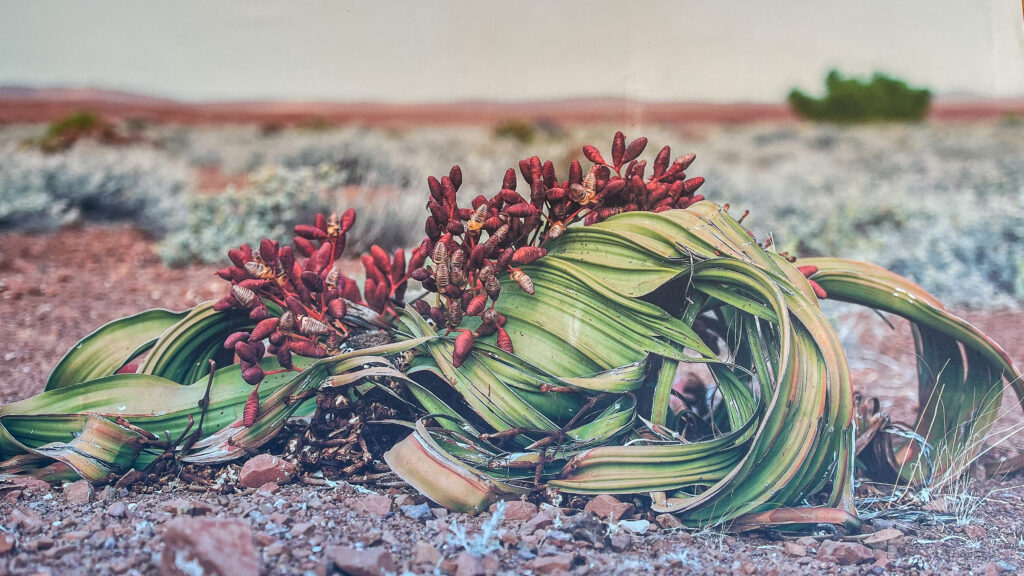
The plant also figures in the national coat of arms. The indigenous people eat the cone of this plant (raw / baked in hot ashes). One of the local names ‘Onyanga’ translates to ‘Onion of the Desert‘. Radiocarbon dating records some plants to be as old as 1000 to 2000 years old.
I found my first Welwitschia at the Desert Rhino Camp which also stood out as the only place to find the endemic Black Rhinos in their natural habitat. I was indeed fortunate to finally spot and spend some time with one adult male black rhino after a whole day of anticipation and tracking.
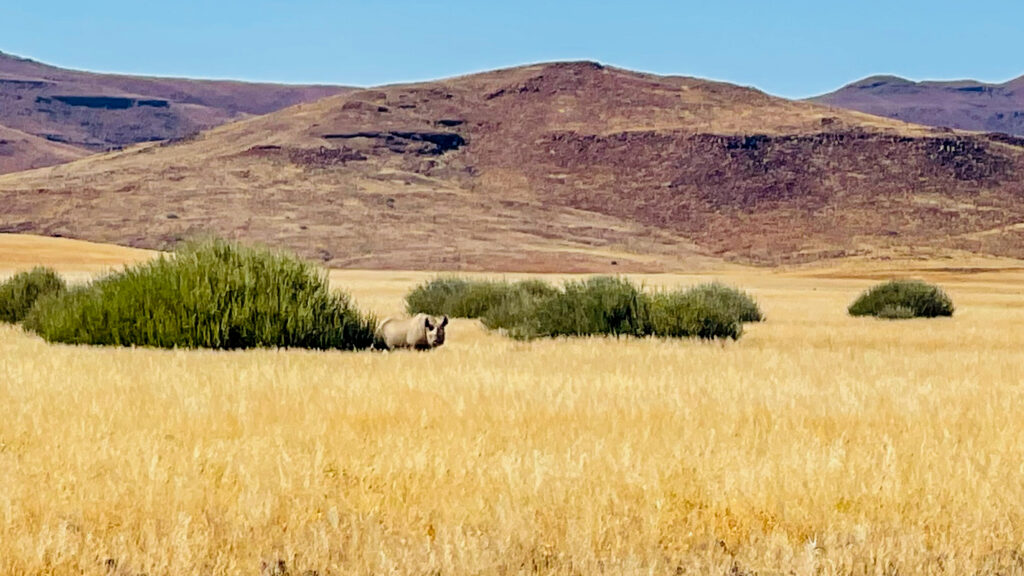
Worth mentioning is the fact that from the welcome to the farewell, everything was expressed and communicated in Nama/Damara (local language with heavy use of click consonants) along with translations in English. The singing in Nama and dancing at the bush dinner added to the cultural blend of the travel.
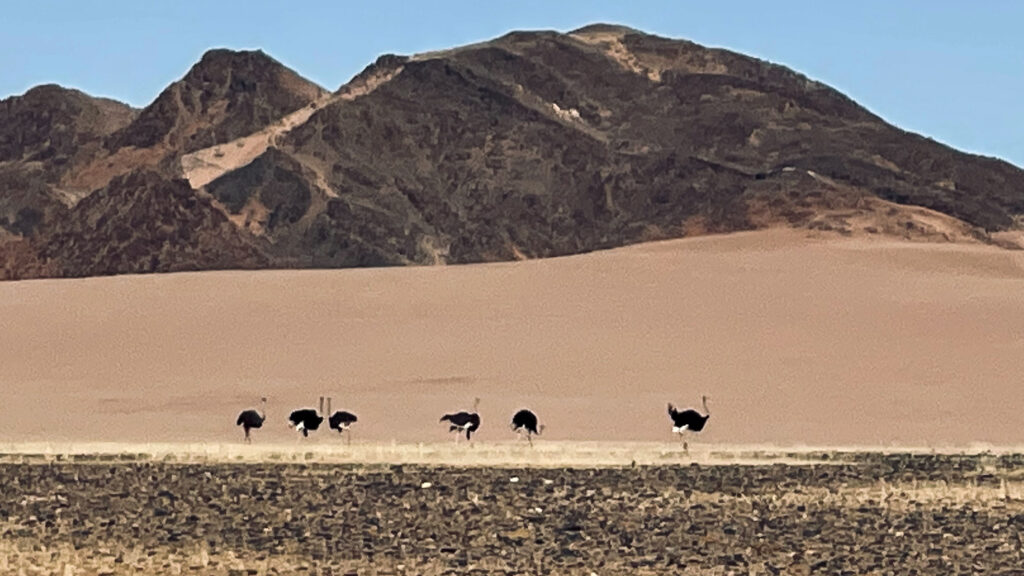
I next visited the Ongava (meaning Rhino) Reserve which is adjacent to the Etosha National Park. The name Etosha (spelled Etotha in early literature) comes from Oshindonga word meaning “Great White Place” referring to the Etosha pan. The Hai//om called the pan Khubus which means “totally bare, white place with lots of dust”.
As the base for Ongava Research Centre, Anderssons (where I stayed) at Ongava provides an interactive hub for guests to learn about conservation science, where cutting edge technology meets hands on, field-based research. The Visitor Centre is available for all Ongava guests to visit at their leisure.

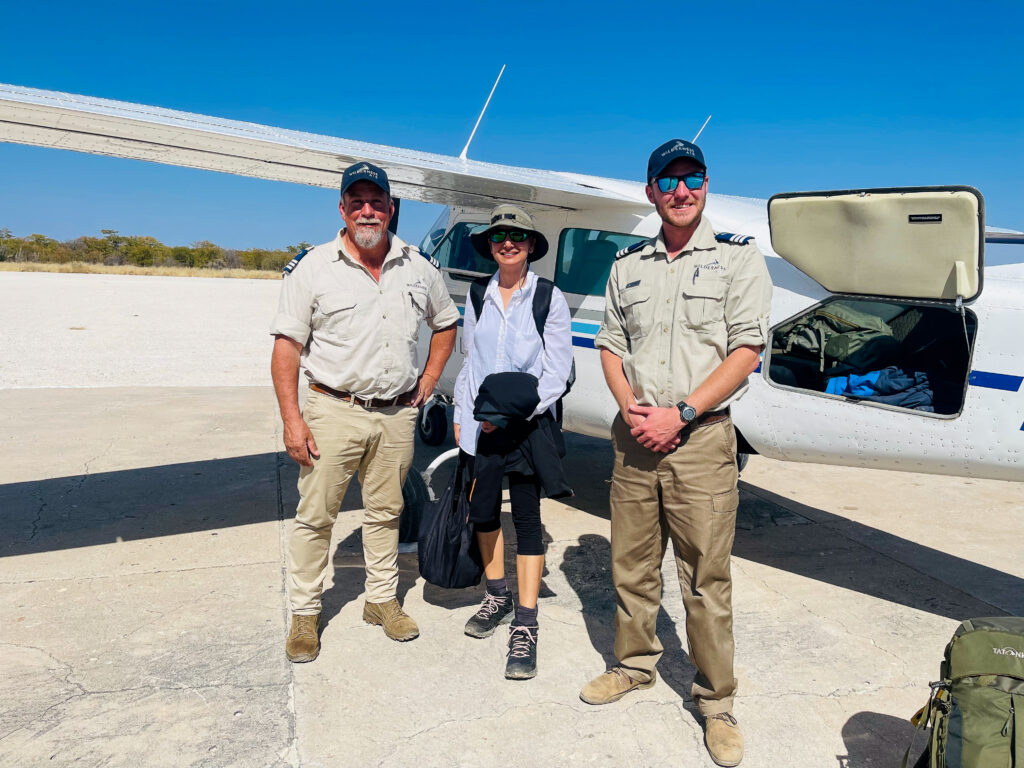
Flying Wilderness Air 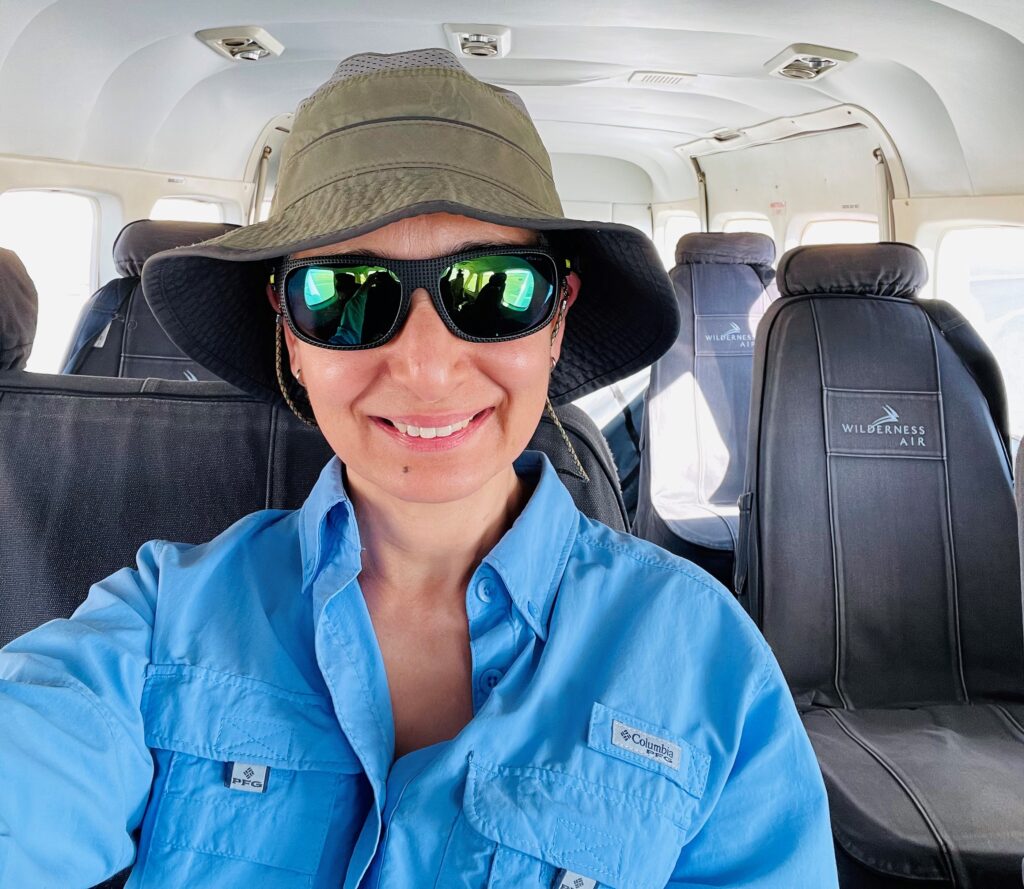
Feeling Privileged, a 12 seater Cessna just for me 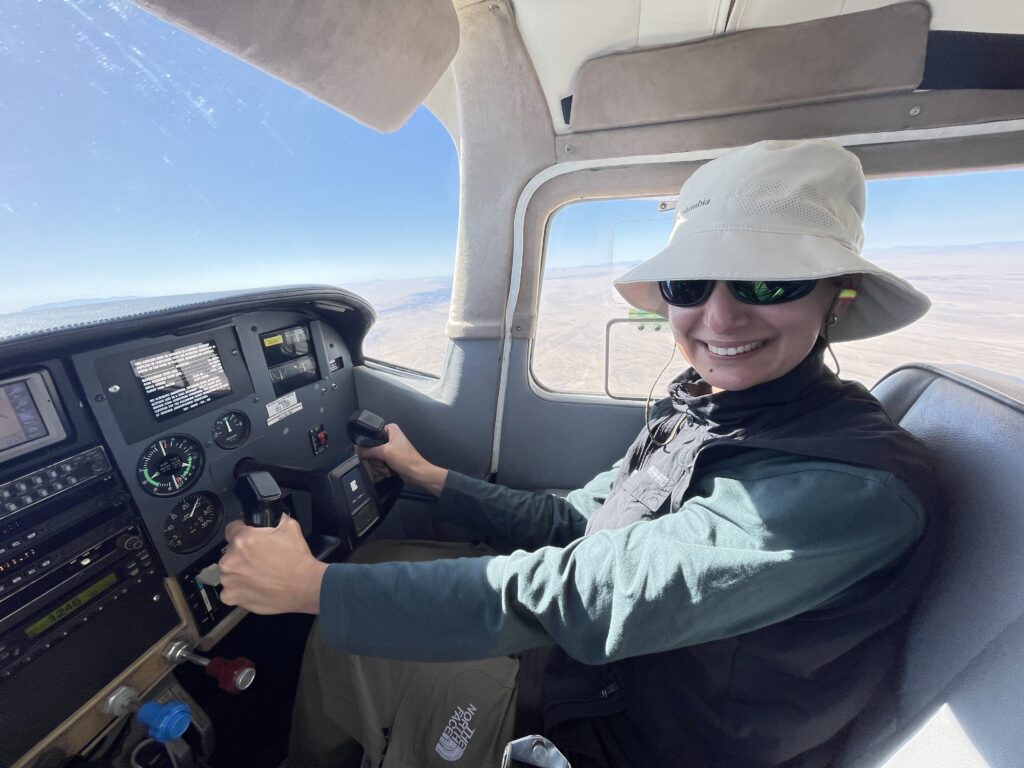
I believe I can Fly … I believe I can touch the Sky… !! 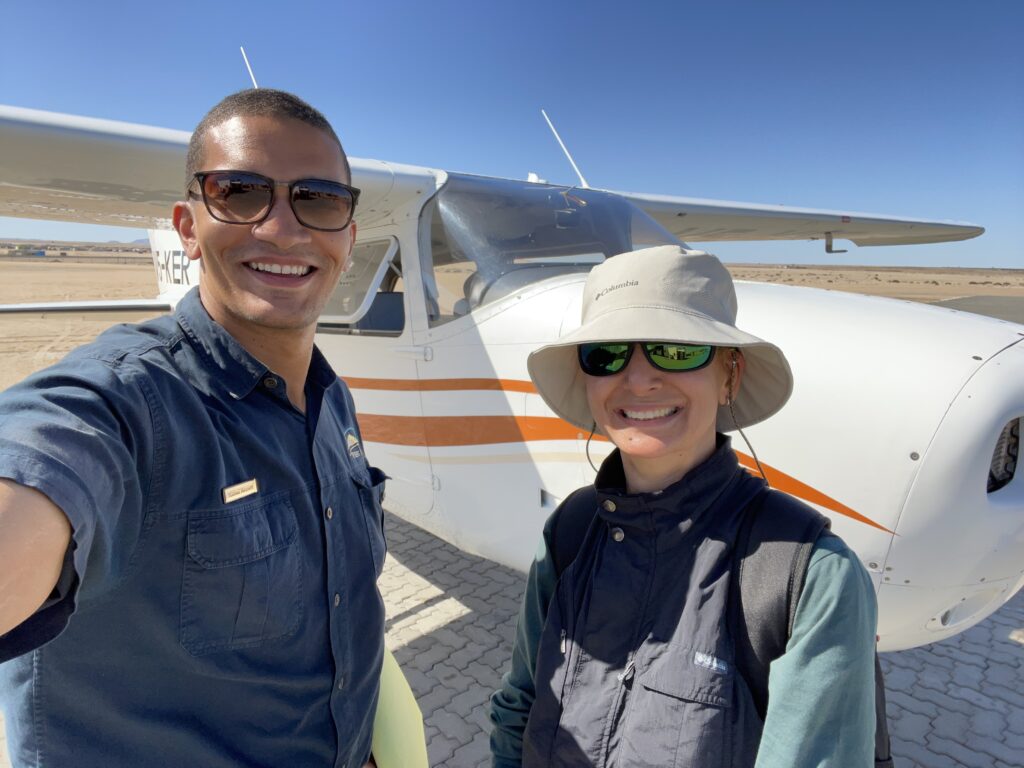
The Skipper 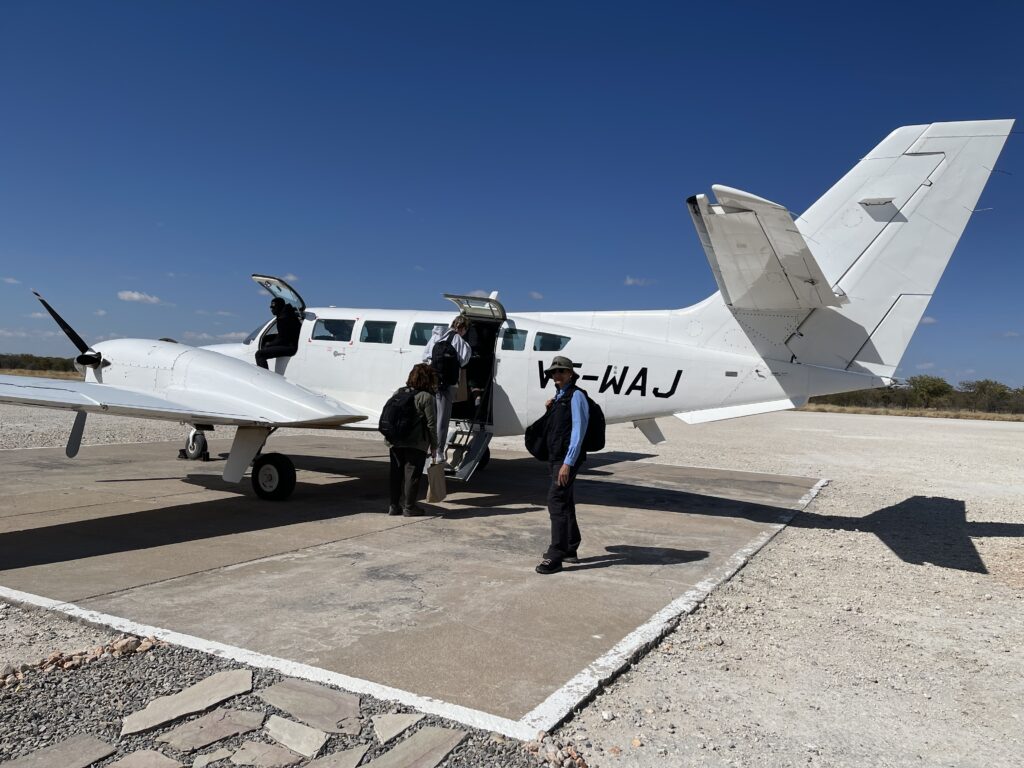
The farewell sortie !
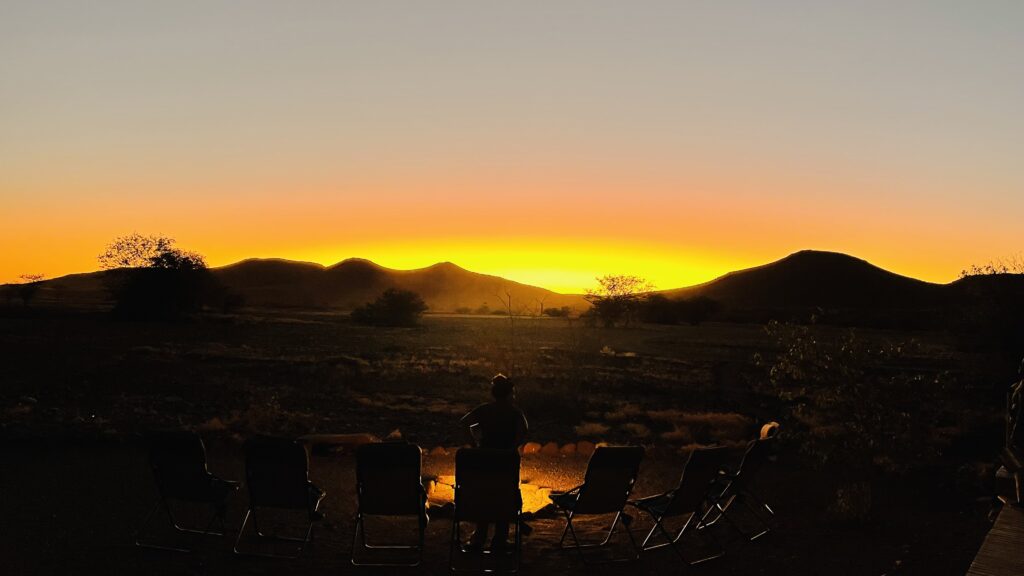
Pachyderms are constant gardeners whose feeding habits create microhabitats for smaller creatures…they are major tree pruners, composting machines and fertilizing agents.
Wonderful and heart warming work is being done by the organisations such as Save Rhino Trust and Wilderness as a safari company to help sustainability of the animals and the natural world. We the people can be the proponents for change and every small step as an individual can bring about a life saving or prolonging effect for the natural world.
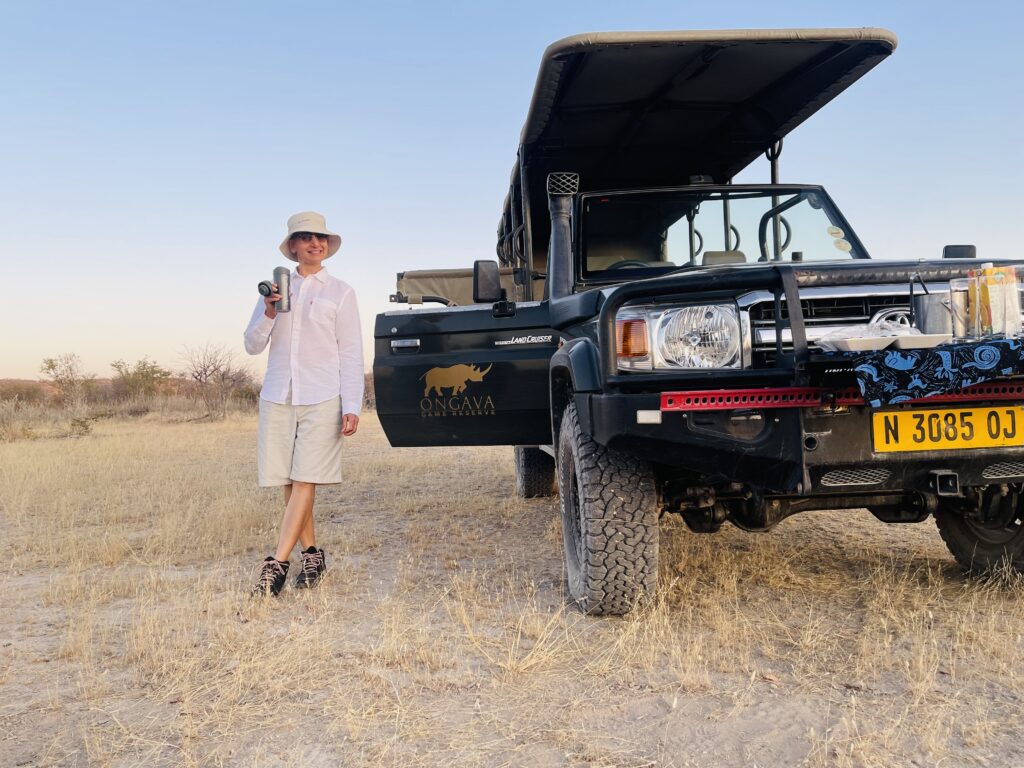
“The goal of life is to make your heartbeat match the beat of the universe, to match your nature with Nature.” – Joseph Campbell
PS – All pictures and videos shot on iPhone.